Noutăţi
„Carmilla” a lui Sheridan Le Fanu și Nașterea vampirului lesbian prădător
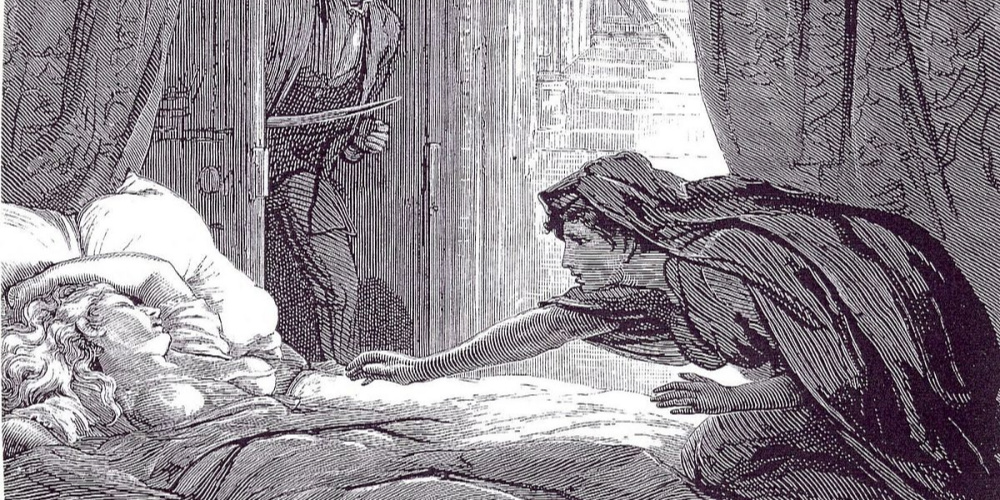
In 1872, Irish author Sheridan Le Fanu published carmilla, a novella in serial form that would reshape the vampire fiction subgenre for all time. The tale of a young woman under siege by a beautiful and sensual female vampire sparked the imaginations of his readers then and would eventually become one of the most adapted novellas of all time, taking its place next to other queer classics including Imaginea lui Dorian Gray și Dracula both of which it predates.
The Life of Sheridan Le Fanu
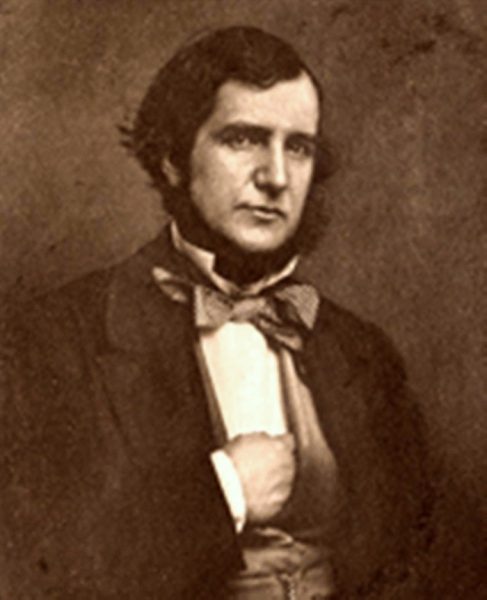
Sheridan LeFanu
James Thomas Sheridan Le Fanu was born into a literary family on August 28, 1814. His father, Thomas Philip Le Fanu was a Church of Ireland clergyman and his mother Emma Lucretia Dobbin was a writer whose most famous work was a biography of Dr. Charles Orpen, an Irish doctor and clergyman who founded the Claremont Institution for the Deaf and Dumb in Glasnevin, Dublin.
Le Fanu’s grandmother, Alicia Sheridan Le Fanu, and his great-uncle Richard Brinsley Butler Sheridan were both playwrights and his niece Rhoda Broughton became a successful novelist.
In his early adult life, Le Fanu studied law at Trinity College in Dublin but never actually practiced the profession, leaving it behind to move into journalism instead. He would go on to own several newspapers in his life including the Dublin Evening Mail which delivered evening newspapers for almost 140 years.
It was during this time that Sheridan Le Fanu began building his reputation as a writer of Gothic fiction beginning with “The Ghost and the Bone-Setter” which was first published in 1838 in the Revista Universității din Dublin and became part of his future collection The Purcell Papers, a collection of stories all reportedly taken from the private writings of a parish priest named Father Purcell.
In 1844, Le Fanu married Susanna Bennett and the couple would have four children together. Susanna suffered from “hysteria” and “neurotic symptoms” which worsened over time and in 1858, she died after a “hysterical attack.” Le Fanu did not write a single story for three years following the death of Susanna. In fact, he did not pick up his pen to write anything other than personal correspondence again until after the death of his mother in 1861.
From 1861 until his death in 1873, however, Le Fanu’s writing became prolific. He published multiple stories, collections and novellas including carmilla, first published as a serial and then in his collection of stories titled In a Glass Darkly.
carmilla

By Michael Fitzgerald (fl. 1871 – 1891) – Haunted Images: The Illustrating of Le Fanu at jslefanu.com, Public Domain
Presented as a case study by Dr. Hesselius, a sort of occult detective, the novella is narrated by a beautiful young woman named Laura who lives with her father in solitary castle in southern Austria.
As a child, Laura has a vision of a woman who visited her in her private chambers and claims to have been pierced in the breast by the woman, though no wound is ever found.
Flash forward twelve years later, Laura and her father are still quite happy when a strange and beautiful young woman named Carmilla arrives at their door after a carriage accident. There is a moment of instant recognition between Laura and Carmilla. They seem to remember each other from dreams they had as children.
Carmilla’s “mother” arranges for the young woman to stay with Laura and her father at the castle until she can be retrieved and soon the two have become the best of friends despite the former’s peculiarities. Carmilla steadfastly refuses to join the family in prayers, sleeps through much of the day, and sometimes seems to sleepwalk at night. She also makes romantic advances toward Laura from time to time.
Meanwhile, in the nearby village, young women begin dying of a strange inexplicable illness. As the death count rises, so does fear and hysteria in the village.
A shipment of paintings arrives at the castle, and among them is a painting of Mircalla, Countess Karnstein, an ancestor of Laura’s who is identical to Carmilla.
Laura begins to have nightmares about a strange feline beast that enters her room at night and attacks her, piercing her breast with its teeth before taking on the form of a beautiful woman and disappearing out the window.
Laura’s health soon begins to decline and after a doctor discovers a small puncture wound on her breast, her father is instructed not to leave her alone.
The story progresses from there as so many do. It is discovered that Carmilla and Mircalla are one and the same and she is soon dispatched by having her head removed after which they burn her body and throw her ashes into a river.
Laura never fully recovers from her ordeal.
carmilla‘s Underlying and Not So Underlying Lesbian Themes
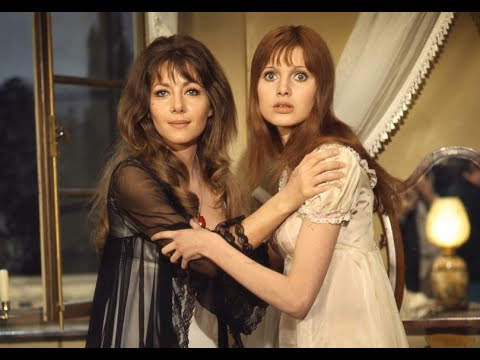
A scene from The Vampire Lovers, an adaptation of carmilla
From almost their first meeting, there is an attraction between Laura and Carmilla that has sparked much debate, especially among modern scholars in queer theory.
On the one hand, there is an undeniable seduction happening within the 108 or so pages of the story. At the same time, however, it is hard not to read that seduction as predatory considering that Carmilla’s ultimate goal is to steal Laura’s life.
Le Fanu, himself, left the story very vague. The advances and seduction, really anything that pointed toward a lesbian relationship between the two, appears as very subtle subtext. This was absolutely necessary at the time and one has to wonder if the man had written the novel even 30 years later how differently the story might have been written.
Cu toate acestea, carmilla a devenit il blueprint for the lesbian vampire character which would become a dominant theme in literature and in film in the 20th century.
She only preys on women and girls. She develops close personal relationship with some of her female victims with an undeniable erotic and romantic edge to those relationships.
Further, her animal form was a large black cat, a recognizable literary symbol of witchcraft, magic, and female sexuality.
When all of these themes are taken together, Carmilla/Mircalla becomes a blatant lesbian character with the social and sexual mores of 19th century thrust upon her including the maxim that she should die in the end.
Carmilla’s Legacy
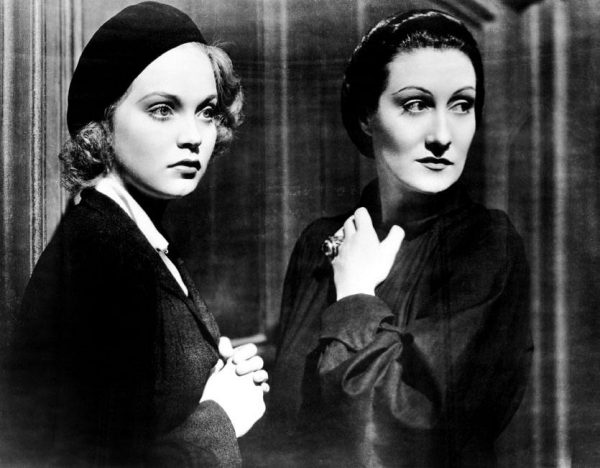
Un alambic din Fiica lui Dracula
carmilla might not have been the vampire story everyone was talking about as the 19th century ended, but it had left an indelible mark on genre fiction and by the early 20th century as film became a more popular medium, it was ripe for adaptation.
I won’t go into all of them–there are a mult–but I do want to hit a few highlights, and point out how the character’s story was handled.
One of the earliest examples of this came in 1936’s Fiica lui Dracula. A sequel to 1931’s Dracula, the film starred Gloria Holden as Countess Marya Zaleska and drew heavily upon carmilla‘s themes of the predatory lesbian vampire. By the time the film was made, the Hays Code was firmly in place which made the novella a rather perfect choice for source material.
Interestingly, the Countess struggles in the film to find a way to rid herself of her “unnatural desires” but ultimately gives in time and again, choosing beautiful women as her victims including Lili, a young woman brought to the Countess under the deceptive premise of modeling.
Naturally, Marya is destroyed at the end of the film after being shot through the heart with a wooden arrow.
Later on in 1972, Hammer Horror produced a very faithful adaptation of the story titled Iubitorii de vampiri, this time with Ingrid Pitt in the leading role. Hammer pulled out all the stops, heightening the erotic nature of the story and relationship between Carmilla and her victim/lover. The film was part of the Karnstein trilogy which expanded upon the mythos of Le Fanu’s original story and brought the lesbian subtext to the foreground.
carmilla made the leap into anime in 2000’s Vânătorul de vampiri D: Pofta de sânge which features the archetypal vampire as the central protagonist. She has, at the beginning of the story, been destroyed by Dracula, himself, but her spirit lives on and attempts to bring about her own resurrection through the use of virgin blood.
It wasn’t only filmmakers who found their inspiration in the story, however.
In 1991, Aircel Comics released a six-issue, black and whit, highly erotic adaptation of the story titled Carmilla.
Award-winning author Theodora Goss flipped the script on the narrative of the original story in her novel European Travel for the Monstrous Gentlewoman. The novel was the second in a series of books titled The Extraordinary Adventures of the Athena Club which focuses on the children of some of literature’s most famous “mad scientists” fighting the good fight and protecting each other from the demented Professor Abraham Van Helsing and his machinations.
In the novel, the Athena Club finds Carmilla and Laura living a rather happy life together and the two eventually aid the club in their adventure and it was honestly a breath of fresh air to the novella’s legacy.
The Vampire and the LGBTQ Community
I do not know for a fact that Sheridan Le Fanu set out to intentionally paint lesbians as predatory and evil, but I do think that he was working from the social ideas of his time and reading his story gives us a rather pointed insight into what the Irish society thought of the “other.”
For a woman to be less than feminine, to take on a role of power, and to not concern herself with family and child-bearing was not unheard of in Ireland at the time, but it was still frowned upon in many social circles. These women were looked upon with a certain amount of distrust, certainly, but when Le Fanu took those views a step further by turning them to monsters, it took on a different light entirely.
I have often wondered if carmilla wasn’t written in direct response to his wife’s death in some way. Could it be that her descent into “fits of hysteria” as they were called at the time and her clinging to religion as her health deteriorated inspired the character of Laura?
Regardless of his original intentions, Sheridan Le Fanu inextricably tied lesbians to predatory genre monsters and those ideas carried forward in both negative and positive ways through the 20th and into the 21st century.
Books, movies, and art in general inform ideas. They are both reflections and catalysts within society, and this trope endures for a reason. Sexualizing and inserting the predatory narrative detracts from the possibility of positive healthy relationships between two women and reduces them to purely physical connections.
He was hardly the first and far from the last who painted a picture of the sexually fluid vampire. Anne Rice has made a fortune writing exquisite novels filled with them. In Rice’s novels, however, it is never that sexuality that makes one a “good” or “bad” vampire. Instead, it is the content of their character and how they treat their fellows.
Despite all of this, I still recommend reading the novella. carmilla is a fascinating story and window into our community’s past.
Ascultă podcastul „Eye On Horror”

Filme
Un alt film înfiorător de păianjen se înfiorează luna aceasta
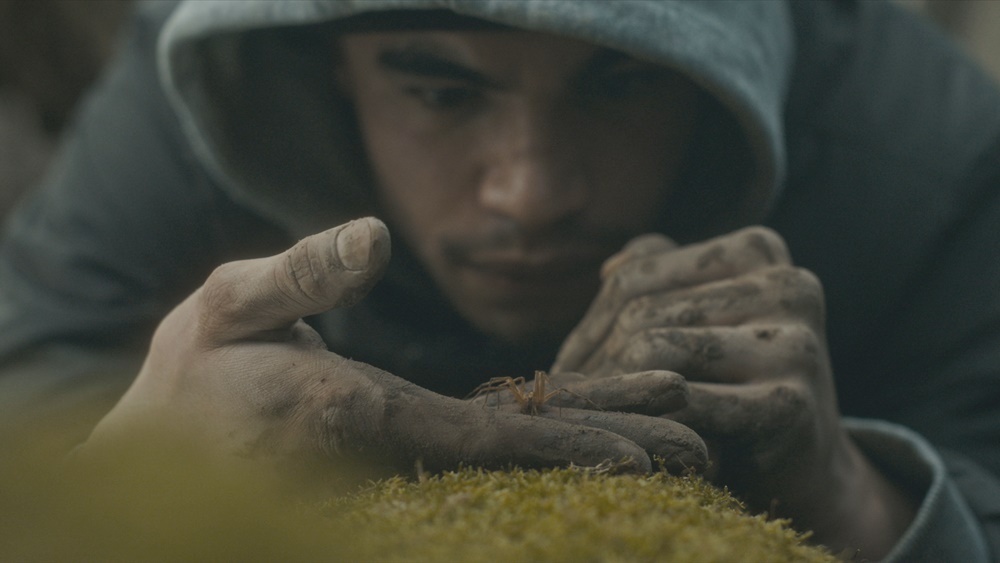
Filmele bune cu păianjeni sunt o temă anul acesta. Primul, Noi am avut Sting și apoi a fost Infestat. Primul este încă în cinematografe, iar al doilea urmează înfiora pornire aprilie 26.
Infestat a primit niște recenzii bune. Oamenii spun că nu este doar o caracteristică grozavă de creatură, ci și un comentariu social asupra rasismului în Franța.
Potrivit IMDb: Scriitorul/regizorul Sébastien Vanicek a căutat idei despre discriminarea cu care se confruntă oamenii negri și arabi din Franța și asta l-a condus la păianjeni, care sunt rareori bineveniți în case; ori de câte ori sunt reperați, sunt bătuți. Întrucât toată lumea din poveste (oameni și păianjeni) este tratată ca niște paraziți de către societate, titlul i-a venit firesc.
înfiora a devenit standardul de aur pentru streaming de conținut horror. Din 2016, serviciul le oferă fanilor o bibliotecă extinsă de filme de gen. în 2017, au început să difuzeze conținut exclusiv.
De atunci, Shudder a devenit o putere în circuitul festivalurilor de film, cumpărând drepturi de distribuție pentru filme sau doar producând unele dintre ele. La fel ca Netflix, ei oferă unui film o scurtă rulare teatrală înainte de a-l adăuga în biblioteca lor exclusiv pentru abonați.
Noaptea tarziu cu diavolul este un exemplu grozav. A fost lansat în cinematografe pe 22 martie și va începe difuzarea pe platformă începând cu 19 aprilie.
Deși nu primesc același zgomot ca Noaptea tarziu, Infestat este un favorit al festivalului și mulți au spus că dacă suferi de arahnofobie, s-ar putea să vrei să ții cont înainte de a-l viziona.
Conform rezumatului, personajul nostru principal, Kalib împlinește 30 de ani și se confruntă cu unele probleme de familie. „Se ceartă cu sora lui pentru o moștenire și a tăiat legăturile cu cel mai bun prieten al său. Fascinat de animale exotice, el găsește un păianjen veninos într-un magazin și îl aduce înapoi în apartamentul său. Este nevoie doar de un moment pentru ca păianjenul să scape și să se reproducă, transformând întreaga clădire într-o capcană de pânză îngrozitoare. Singura opțiune pentru Kaleb și prietenii lui este să găsească o cale de ieșire și să supraviețuiască.”
Filmul va putea fi vizionat începând cu Shudder aprilie 26.
Ascultă podcastul „Eye On Horror”
Filme
Parțial concert, parțial film de groază, a fost lansat trailerul „Trap” al lui M. Night Shyamalan
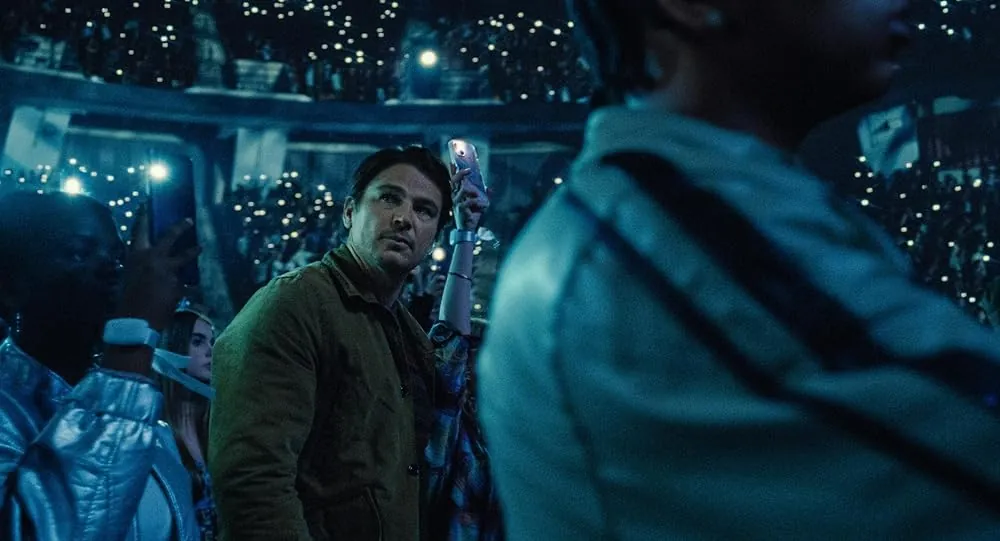
În adevărat shyamalan forma, el își instalează filmul Capcană într-o situație socială în care nu suntem siguri ce se întâmplă. Să sperăm că există o întorsătură la sfârșit. În plus, sperăm că este mai bun decât cel din filmul său dezbinător din 2021 Vechi.
Trailerul pare să ofere multe, dar, ca și în trecut, nu te poți baza pe remorcile lui, pentru că deseori sunt niște heringi roșii și ești îngăduit să gândești într-un anumit fel. De exemplu, filmul său Knock la cabana a fost complet diferit de ceea ce presupunea trailerul și dacă nu ai fi citit cartea pe care se bazează filmul, tot era ca și cum ai fi în orb.
Intriga pentru Capcană este numit o „experiență” și nu suntem siguri ce înseamnă asta. Dacă ar fi să ghicim pe baza trailerului, este un film de concert înfășurat în jurul unui mister de groază. Sunt piese originale interpretate de Saleka, care o interpretează pe Lady Raven, un fel de hibrid Taylor Swift/Lady Gaga. Au înființat chiar și o Site-ul Lady Ravene pentru a promova iluzia.
Iată trailerul proaspăt:
Potrivit rezumatului, un tată își duce fiica la unul dintre concertele aglomerate ale Lady Raven, „unde își dau seama că sunt în centrul unui eveniment întunecat și sinistru”.
Scris și regizat de M. Night Shyamalan, Capcană în rolurile principale: Josh Hartnett, Ariel Donoghue, Saleka Shyamalan, Hayley Mills și Allison Pill. Filmul este produs de Ashwin Rajan, Marc Bienstock și M. Night Shyamalan. Producătorul executiv este Steven Schneider.
Ascultă podcastul „Eye On Horror”
Noutăţi
O femeie aduce cadavrul în bancă pentru a semna documentele de împrumut

Avertisment: Aceasta este o poveste tulburătoare.
Trebuie să fii destul de disperat după bani pentru a face ceea ce a făcut această braziliancă la bancă pentru a obține un împrumut. Ea a introdus un cadavru proaspăt pentru a susține contractul și se pare că a crezut că angajații băncii nu vor observa. Au facut.
Această poveste ciudată și tulburătoare vine prin intermediul ScreenGeek o publicație digitală de divertisment. Ei scriu că o femeie identificată ca Erika de Souza Vieira Nunes a împins în bancă un bărbat pe care l-a identificat drept unchiul ei, rugându-l să semneze documente de împrumut pentru 3,400 de dolari.
Dacă sunteți zguduitor sau declanșați ușor, fiți conștienți de faptul că videoclipul surprins cu situația este deranjant.
Cea mai mare rețea comercială din America Latină, TV Globo, a relatat despre crimă și, potrivit ScreenGeek, aceasta este ceea ce Nunes spune în portugheză în timpul tentativei de tranzacție.
„Unchiule, ești atent? Trebuie să semnați [contractul de împrumut]. Dacă nu semnezi, nu ai cum, pentru că nu pot semna în numele tău!”
Ea adaugă apoi: „Semnați ca să mă puteți scuti de alte dureri de cap; Nu mai suport.”
La început am crezut că ar putea fi o păcăleală, dar conform poliției braziliene, unchiul, Paulo Roberto Braga, în vârstă de 68 de ani, a murit mai devreme în acea zi.
„Ea a încercat să pretindă semnătura lui pentru împrumut. A intrat în bancă deja decedat”, a declarat șeful poliției, Fábio Luiz, într-un interviu acordat TV Globo. „Prioritatea noastră este să continuăm investigarea pentru a identifica alți membri ai familiei și a aduna mai multe informații cu privire la acest împrumut.”
Dacă va fi condamnat, Nunes ar putea risca închisoare sub acuzația de fraudă, delapidare și profanarea unui cadavru.
Ascultă podcastul „Eye On Horror”
-

 Remorcizile în urmă 7
Remorcizile în urmă 7Urmărește trailerul pentru „Under Paris”, filmul pe care oamenii îl numesc „French Jaws” [Trailer]
-

 Noutăţizile în urmă 3
Noutăţizile în urmă 3Acest film de groază tocmai a deraiat un record deținut de „Train to Busan”
-

 Filmezile în urmă 7
Filmezile în urmă 7Ernie Hudson va juca în „Oswald: Down The Rabbit Hole”
-

 Filmezile în urmă 3
Filmezile în urmă 3Urmăriți „Imaculate At Home” chiar acum
-

 Noutăţizile în urmă 4
Noutăţizile în urmă 4Citiți recenzii pentru „Abigail” Cele mai recente de la Radio Silence
-

 Editorialzile în urmă 5
Editorialzile în urmă 5Debutul regizoral al lui Rob Zombie a fost aproape „The Crow 3”
-

 Noutăţizile în urmă 4
Noutăţizile în urmă 4Melissa Barrera spune că contractul ei „Scream” nu a inclus niciodată un al treilea film
-

 Noutăţizile în urmă 2
Noutăţizile în urmă 2Scheletul de 12 picioare de la Home Depot se întoarce cu un nou prieten, plus un nou accesoriu în mărime naturală de la Spirit Halloween
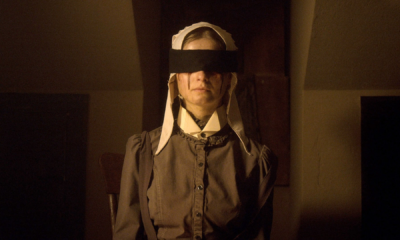























Trebuie să fiți autentificat pentru a posta un comentariu Conectare